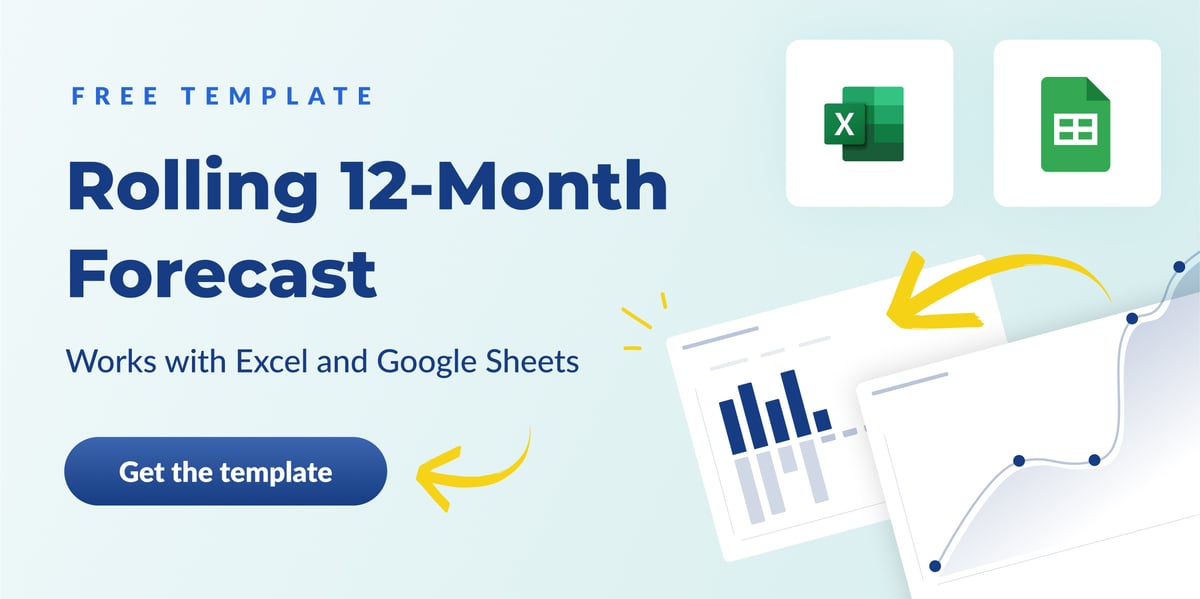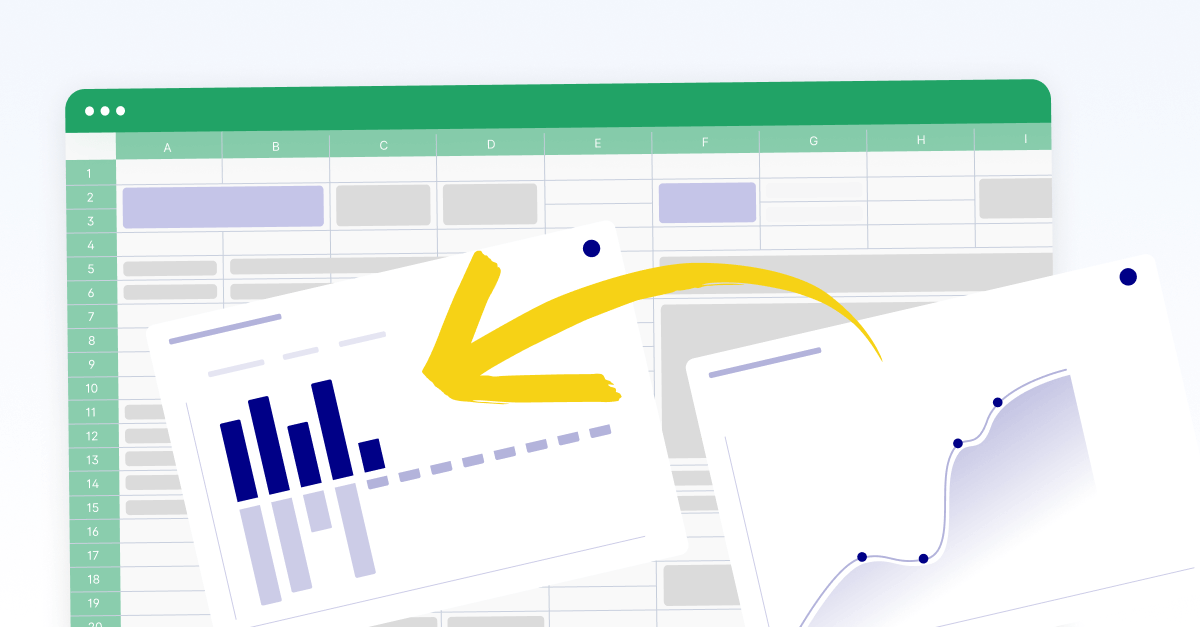What are accounts receivable?
Accounts receivable represent the amount of money a company is expecting from its customers. In practice, when a business sells a product or service, it sends an invoice with details about the amount due and the payment terms. Until the customer pays, these outstanding invoices are recorded as accounts receivable in your chart of accounts and are classified as current assets.
Think of accounts receivable as a promise from your customers to pay in the near future. This promise is part of your business's liquidity since it secures the cash flow you need to continue operations, pay suppliers, and invest in growth. Properly managing your accounts receivable directly impacts your company’s financial health, creditworthiness, and overall profitability.
How to calculate accounts receivable
You can use an accounts receivable formula to calculate the average accounts receivable for a specific period and assess your ability to collect payments from your customers.
To calculate the average accounts receivable, use the following formula:
Average accounts receivable = Beginning accounts receivable + Ending accounts receivable / 2
This formula gives you the average amount of money owed to you by your customers over a certain period–usually a fiscal year or quarter.
Accounts receivable vs. accounts payable
While accounts receivable refer to the money customers owe a company, accounts payable (AP) goes in the opposite direction. AP represents the money a company owes to its suppliers or vendors for goods or services it has received.
Put simply, AR is about the money coming in while AP is about the money going out.
The key difference lies in their impact on a company's cash flow:
- Accounts receivable positively affect cash flow when collected promptly. A high AR balance could mean strong sales but might also suggest potential issues in collecting payments.
- Accounts payable represent obligations that need to be paid within a specific period. Efficient management of AP ensures that the company can take advantage of discounts for early payment and maintain good relationships with suppliers.
When both accounts receivable and payable are in balance, it’s easier to predict your cash flow. This helps you stay compliant and accurate when it’s time for account reconciliation.
Why accounts receivable matter to FP&A leaders
Accounts receivable directly impact several FP&A tasks, including managing the company’s cash flow, creating financial projections, and developing strategic plans.
Let’s look at some of these elements in a bit more detail.
- Cash flow forecasting is easier when you know when payments are due. This allows FP&A leaders to predict cash inflows and plan for any potential shortfalls.
- Working capital involves all your short-term obligations and day-to-day operations. Collecting your receivables on time is vital to managing these liquid payments and avoiding the need for costly short-term borrowing.
- Financial forecasting is much easier when you’re on top of your accounts receivable. FP&A software quickly analyzes patterns like the average collection period and customer payment behavior so you can make more informed decisions on budgeting, investing, and managing financial risks.

How accounts receivable works
The entire accounts receivable process covers several steps, from issuing invoices to tracking payments and following up on overdue accounts. These tasks are usually spread out across the FP&A team.
Typically, FP&A analysts focus on analyzing receivable data to forecast cash flows and inform strategic planning, while finance managers and the CFO handle the operational aspects, such as setting credit policies, managing collections, and making decisions about allowances for uncollectible accounts.
Now we’re going to look at three of the more technical components of managing accounts receivable.
Accounts receivable aging schedule
The accounts receivable aging schedule is a tool used to categorize all receivables based on how long they have been outstanding. This schedule breaks down receivables into different aging buckets–such as 0-30 days, 31-60 days, 61-90 days, and over 90 days–so you can identify overdue accounts and prioritize collections.
Previously, this process would eat up valuable time verifying separate data sheets to keep payments in the correct bucket. But now, financial automation software allows you to customize workflows so all of this data analysis is automatic. You can even automate payment reminders to clients, reducing your actual work to simple monitoring of a dashboard.
Accounts receivable turnover ratio
The accounts receivable turnover ratio is a more strategic measure of how efficiently a company collects receivables over a given period. You calculate the ratio by dividing net credit sales by the average accounts receivable to find out how many times, on average, receivables are collected during the period. A higher turnover ratio generally suggests that the company is collecting its receivables quickly–which is what most companies aim for.
Accounts receivable turnover ratios can show a company how well they are performing against competitors in their industry. FP&A managers will use the same data to work on strategies that improve how efficiently they send out invoices, monitor payment terms, and follow up on overdue payments. When there is a drop in the receivable turnover ratio, CFOs may tighten credit terms or invest in technology to streamline the collection process.
“Allowance for uncollectible accounts” account
Of course, those in charge of FP&A strategies have to make certain allowances for receivables that the company doesn’t expect to collect.
Allowance of uncollectible accounts, or allowance for doubtful accounts, is a contra-asset account that shows an estimate of receivables you probably won’t get. It gives you a more accurate picture of your net accounts receivable and financial health while still keeping tabs on all your cash inflow and outflow.
FP&A teams use this allowance to create more realistic projections and prepare for any financial implications from bad debts. The more senior members of the team, like a finance manager or director, are usually in charge of determining the amount based on historical data, current economic conditions, and the aging schedule. With every change in the likelihood of collection, you can update the allowance to maintain accuracy.
Accounts receivable example
To put the concept of accounts receivable in context, let’s look at an example.
Imagine a company, Pinewood Furniture, that sells $10,000 worth of office furniture to a customer on credit. The customer has 30 days to pay the invoice. As soon as Pinewood Furniture delivers the items, it records the $10,000 as accounts receivable on its balance sheet.
If the customer pays within 30 days, the accounts receivable are converted into working capital, positively impacting the company’s cash flow. However, if the payment is delayed, Pinewood Furniture’s cash flow could suffer, which could have a knock-on effect whereby bills go unpaid and suppliers file complaints. Pinewood Furniture needs to follow up with the customer to secure payment to stay out of debt, which is why reliable customers are so important to businesses.
Here, we can see how accounts receivables can be both a potential source of cash flow and a risk if not managed properly. Monitoring AR closely and adopting effective collection strategies minimize delays and defaults, which is a gain for an organization’s overall financial health.

Accounts receivable best practices
Now we’ve got a grasp of what accounts receivable means and why it matters, let’s turn our attention to how best to manage them.
1. Understand AR’s impact on cash flow and financial models
To keep your accounts healthy, you need to know how they impact cash flow and financial models. Regularly monitoring AR levels allows companies to anticipate cash inflows accurately, identify potential cash shortages, and adjust financial plans as needed.
Integrating AR data into cash flow models helps ensure that projections are realistic and reflective of actual customer payment behaviors.
2. Set up clear payment terms
Establishing clear, concise payment terms from the outset is essential for companies operating at scale. Goodwill doesn’t go well with high volume, so you need to lay down the law about when and how payments are expected.
Terms should specify:
- The payment due date
- Acceptable payment methods
- Any penalties for late payments
Clear terms reduce confusion, set customer expectations, and encourage prompt payment, which is vital for maintaining a steady cash flow.
3. Recognize the expected revenue period
According to the generally accepted accounting principles (GAAP), revenue is recognized not when cash is received but when it’s realized and earned. This typically occurs at the point of sale—not when payment is made. This standardized system gives a real picture of how much you’re earning, even if the cash hasn’t come in.
4. Encourage timely customer payments
Encouraging customers to pay on time is a pretty smart strategy for managing accounts receivable. Some companies may offer incentives and discounts for early payments and send automated reminders before and after invoices are due. This can significantly improve payment timeliness and reduce administrative efforts.
5. Manage “bad debt”
No matter how effectively accounts receivable are managed, some debt may become uncollectible due to a client’s bankruptcy or negligence. Businesses should regularly review their receivables and set aside an allowance for bad debt to cover the expected losses while making efforts to reduce trade with unreliable customers.
This proactive approach takes in more relevant data about your true financial position and cushions the impact of bad debt on overall profitability.
Gain deeper insights into your financial data
A clear understanding of accounts receivable is crucial for promoting healthy cash flow, maintaining financial stability, and supporting long-term growth.
Cube empowers FP&A teams to integrate and analyze financial data, providing insights into how AR trends impact cash flow. With Cube, you can enhance cash flow forecasting, streamline reporting, and make more informed strategic decisions based on real-time financial data.
Find out more by scheduling a free demo with Cube.



.png)









.png)

.png)



.png)
.png)